THE MODERN
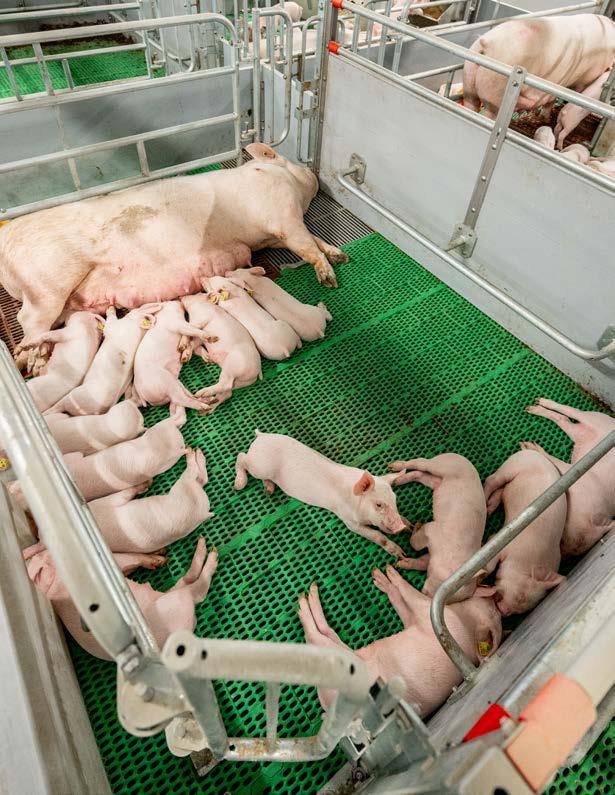
IN THIS ISSUE:
Topigs Norsvin Innova
Water on the Farm - How’s Yours?
Ebenfeld Colony Poultry Barn
AITC-MB Kids Corner
Up & Comers in Ag
Controlling Weed Seeds Made Easier + More!


IN THIS ISSUE:
Topigs Norsvin Innova
Water on the Farm - How’s Yours?
Ebenfeld Colony Poultry Barn
AITC-MB Kids Corner
Up & Comers in Ag
Controlling Weed Seeds Made Easier + More!

Just like the industry we serve, the Modern Producer continues to evolve. In this issue we strive to continue to bring you current and relevant information for all farming sectors, with highlights on hog, poultry, and dairy as well as grain production and processing. This issue has something for everyone as we cover a wide range of topics ranging from business practices such as accounting and HR to safety to innovation and production tips, as well as something for the kids and the chefs in your family. As always, we welcome your feedback and look forward to continuing to use this platform to provide a benefit to the farming community.

My hope is I can bring a fresh perspective to the agriculture sector. Despite being a newcomer, I am fascinated by the technology and science behind food production. My enthusiasm for the Modern Producer is driven by the importance to ensure every issue is filled with valuable resources and information for our customers. My work in agriculture is marked by a genuine curiosity and a commitment to sharing knowledge. Please enjoy the latest issue!

It brings me great excitement to witness the publication of our 12th issue. I am pleased to step into the role of editor this time around. I am fortunate to collaborate with a team of dedicated and knowledgeable individuals who are so great to work with on this project, showcasing incredible work being done by our brands across Canada, and highlighting remarkable success stories and innovations of our farming partners. Enjoy Issue 12, make sure to subscribe so you don’t miss out on everything we have coming this year.

Issue 12 is here, and packed with our biggest variety of articles yet, plus two more editors added to the line-up! You may notice a duplicate article in this magazine, as well as the last, but it was so good we needed to include it in both. Enjoy delving into some of our new features, old favourites, and make sure you let us know what you want to see for Issue 13.
 By Ashley Graye
By Ashley Graye
Did you know that over 123,000 jobs in Agriculture will need to be filled by 2030 (Farmer 4.0, RBC Canada)? While this statistic may seem daunting to employers out there, it doesn’t have to be.
Programs like the Canadian Agricultural Business Education Fund, or CABEF, help guide students wishing to enter the agricultural job market by providing scholarships, bursaries and awards to a number of students enrolled in universities, colleges or trade schools.
We had the pleasure of speaking with Mary Thornley, Executive Director of CABEF recently to discover more about this important organization.
How was CABEF formed, and by who?
It was Larry Hertz, now Vice President with North American Equipment Dealers Association, who came to me with the idea of providing scholarships to Canadian students who are pursing an agricultural education. The initial discussions started in 2009 with Larry, Rod Delahey, Justin Funk and myself. The first board meeting was held in May 2010 and on March 20,
2013 we obtained our charity status with the Canada Revenue Agency. A long three year process! We provided our first 6 scholarships in 2014.
What is the main goal of CABEF?
CABEF awards seven $2,500 scholarships annually to full-time students enrolling or currently in an agricultural related program at a Canadian university, college or apprenticeship institution.
One of the most pressing issues facing the agri-food industry is the labour shortage. With a projected 123,000 positions that could go unfilled in the next decade, it is desperately clear that we need more people to choose careers in agri-food.
Our goal is to encourage talented, energetic young people to enter the agri-food industry. By providing scholarships to help cover their post-secondary education expenses, we’re encourage students to pursue an agricultural education and encourage talented, energetic young people to enter the agrifood industry.

What types of applicants does CABEF focus on when selecting recipients?
Canadian students who will be entering their 1st year or currently in their 2nd or 3rd year pursuing an agricultural or ag-related program at a recognized Canadian college, university or trade school are eligible to apply
Applicants are assessed on a combination of their leadership attributes, and written or video response to a question. This year the essay question is:
“Canada is a global leader in sustainable agriculture and food production. Provinces and Territories came together to create the Guelph Statement which outlines a vision for 2028. Select one of the six guiding principles from the Guelph Statement and describe three ways that the agriculture and food industry can remain sustainable for years to come.”
The application deadline is April 30th. The applicants are then judged by the CABEF board of directors in May and the 7 selected recipients are notified by May 30th. These dates remain steadfast each year!
How are funds raised for the 7 recipients?
These scholarships are funded through generous donations from agri-business and people involved in the agricultural and food industry. We get a lot of support from CAMA (Canadian Agri-Food Marketers Alliance) and host funding raising activities at their national events.
Each year we offer the Wall of Wine and Wall of Whisky – for a $100 donation, your name will go into a draw to win either 24 bottles of wine or 12 bottles of whisky. The draw will take place this year on November 7 at the Best of CAMA gala awards event in Calgary, AB.
We also have a live auction during the Best of CAMA event where our media partners donate packages to be auctioned off at the event. It’s a win-win-win for CABEF, our media partners and those who purchase the media packages. We typically raise over $40,000 each year at that event.
How can individuals or companies support CABEF?
This year, we are launching the Champions of CABEF campaign. This large-scale fundraiser has a lofty goal of raising $250,000 by the end of 2025. We are looking for champions who will commit to support youth leaders and the future of the agri-food industry. Each Champion of CABEF donation directly supports scholarships for Canadian students. There are several sponsorship levels offered through the Champion of CABEF program - $2,500 to $25,000.
This is a critical time in our organization’s history, and we need the agri-food industry’s support to make our vision a reality. We’d like to expand the number of scholarships offered and potential offer to postgraduate students as well. With help from companies and individuals, we can expand our scholarship offerings to ensure that even more deserving students can launch into their agricultural career with a bit more financial security. If you are interested in becoming a Champion of CABEF, please reach out to Mary Thornley at info@cabef.org
What are the future plans for CABEF?
We like to expand our scholarship offerings to ensure that even more deserving students can launch into their agricultural career with a bit more financial security. Either increase the amount of the scholarship, the number of scholarships or expand the qualifications to post-graduate students by launching Champions of CABEF, a large scale fundraiser with a goal of $250,000 by the end of 2025.
Interested in supporting CABEF? Scan the QR code to visit the website and click ‘Donate Now’!
In the ever-changing world we are seeing technological advancements touch almost every industry and the agricultural sector is no different. A deep respect for the historical practices with a drive to meet the increasing demand has resulted in innovative projects with an eye toward the future. A recently completed project for Ebenfeld Colony, supplied and installed by Western Ag Systems in Saskatchewan, is a great showcase of this technical prowess, and dedication to sustainability and efficiency.
This was a multiphase project begging with a pullet and layer facility and then completion of a feed mill that would feed the pullet and layers as well as turkey barns also on the colony. From the initial blueprint sketches in the spring of 2022 to the culmination of the project when the mill beginning to create feed in February 2024, this two year project integrated cutting-edge technologies with time honored agricultural practices.
The Pullet and Layer Barns are a state-of-the-art facility, designed to accommodate 24,000 layers, boasts the latest in poultry housing technology. The Valli Aviary Cages, Paramada Plus model, with three tiers, represents the pinnacle of design, ensuring optimal comfort and space utilization for the birds. Additionally, Valli’s rocker system for scratch pads ensures eggs are safely tipped back onto the egg belts, enhancing operational efficiency. Access to egg belts and nest areas is on the rear of the nest box, ensuring ease of maintenance and monitoring. The retractable perches also encourage natural behaviours while also serve as step when access is needed to the front of the nesting boxes and feed systems.
The barn and cage system is equipped with CBM Lights and CBM System Lights, strategically set up in independent


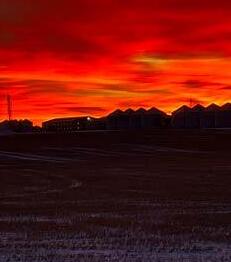
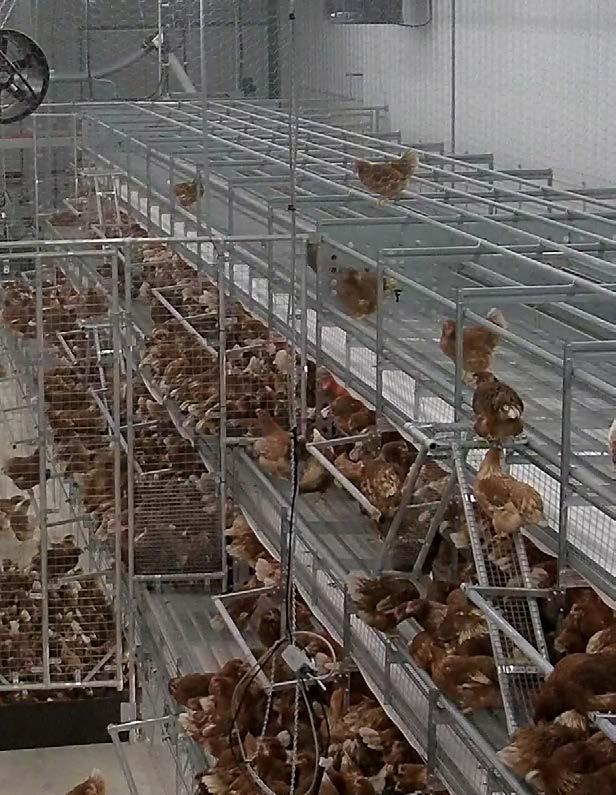
zones with moon lighting atop and under-lights below, this system provides a nurturing environment for the birds, enhancing their well-being and productivity. The light dimmers are a CBM 48v system with 12 watt lights that contain a 8 watt white and 4 watt red that can be custom blended for infinite color temperature. This system is integrated into a custom United Agri Systems control panel to allow the lights to run on a schedule to optimize the health and productivity of the birds.
The barn is outfitted with fully automated manure removal and egg belt systems, streamlining operations and ensuring impeccable hygiene standards. A network of 5-inch M500 Flex Augers powers the chain feeding system, ensuring seamless distribution of feed to meet the birds’ nutritional requirements. Lubing chain conveyors facilitate the efficient transfer of eggs to the egg packer.
Central to the facility’s design is its sophisticated ventilation and heating systems. Ventilation is achieved through a combination of Ventom 5 tunnel inlets from TPI and pad cooling, ensuring optimal air quality and temperature regulation. Utilizing Chimney Vents for minimum ventilation alongside TPI Aeron Inlets, the system leverages the venturi effect to adapt dynamically to the barn’s air movement requirements, ensuring year-round comfort for the birds. The barn also features EC Units for tunnel fans, offering variable speeds to optimize energy consumption without compromising ventilation efficacy.
The key component to the technology of this barn is the custom United Agri Systems control panel. The UAS custom control allows for whole house control and management from one spot. Ventilation, feed schedules, feed consumption tracking, automatic water line flushing, bird weighing, light programs and egg count can all be tracked, and modification of the parameters are made by the same platform. The UAS controller is more than a management tool however as it is also the electrical load workhorse for the barn; handling all of the motors loads and devises for the items above along with manure removal systems. With using the UAS control the local install team saves time and labour as it provides a single place for all of the equipment to be connected with complete wiring diagrams supplied for the whole barn.
Alongside the system in the barns themselves is the cutting edge feed mill. The grain mill boasts an impressive capacity, capable of processing 4 to 5 metric tons of grain per hour. To achieve this, the mill includes a Skiold cleaner and disc
mill. These machines work together to clean and grind the grain to the perfect consistency for the birds. Alongside this is a sophisticated three-scale system, ensuring precise measurement of ingredients for accurate feed formulation. The 2-ton mixer combines the ingredients thoroughly, while the Easy Automation 30-box micro system facilitates the storage and management of various feed components. To streamline feed distribution, a blower unit and a 30-port blower manifold was installed. These components work in tandem to deliver the freshly mixed feed to the birds efficiently. Additionally, a 6-tote ingredient system allows for the easy storage and access of different feed ingredients, ensuring flexibility in feed formulation.
The mill features extensive ingredient storage capabilities, the raw ingredients are stored in several Optimum grain bins alongside the Easy Automation micro ingredient boxes. The system is set up to blow feed directly into the barns along with a load-out bin that can receive feed directly from the receiving system. The 6000 bushels per hour receiving system ensures that grains can be quickly and efficiently unloaded and processed.
While the construction of the mill faced the typical challenges of winter construction, especially in a Saskatchewan winter, the collaboration between the team at Western Ag Systems and Ebenfeld colony persevered and the all the components were installed and in place in approximately 30 days. The mill began its start up process in early February 2024 with a tech on site from Easy Automation to get the software that would run the mill and batching system online. This process took about a week to complete.
The commitment to innovation and excellence in the agricultural marketplace shines brightly through the completion of this multi-phase project. From the meticulous planning stages to the final integration of the state-of-theart grain mill, each step underscores the dedication to sustainability, efficiency, and the advancement of farming practices. The seamless fusion of cutting-edge technologies with time-honored agricultural principles sets a new standard for the industry, empowering farmers with greater control over feed production and fostering enhanced productivity and animal welfare. the Western Ag Systems team was honored to be the chosen partner of Ebenfeld Colony for this project. Their hard work and dedication alongside the team at Western Ag Systems brought this project to life.
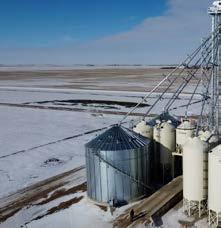
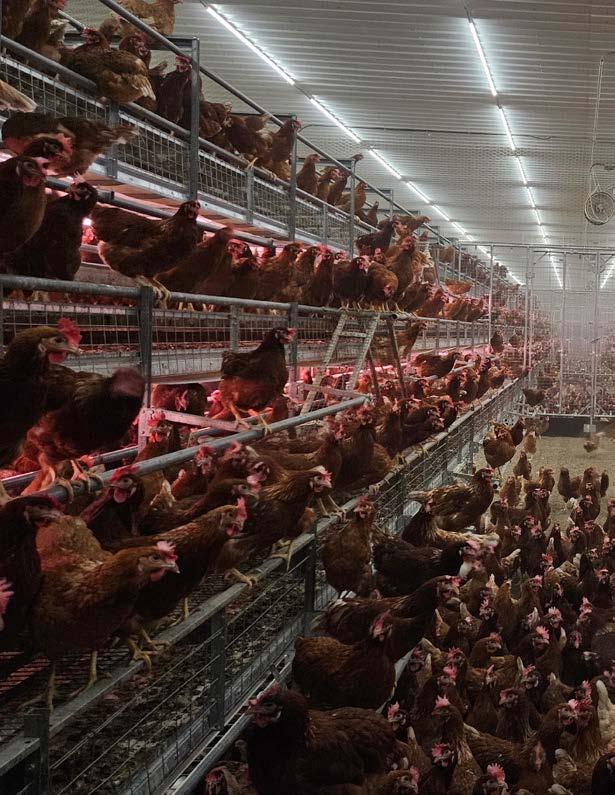

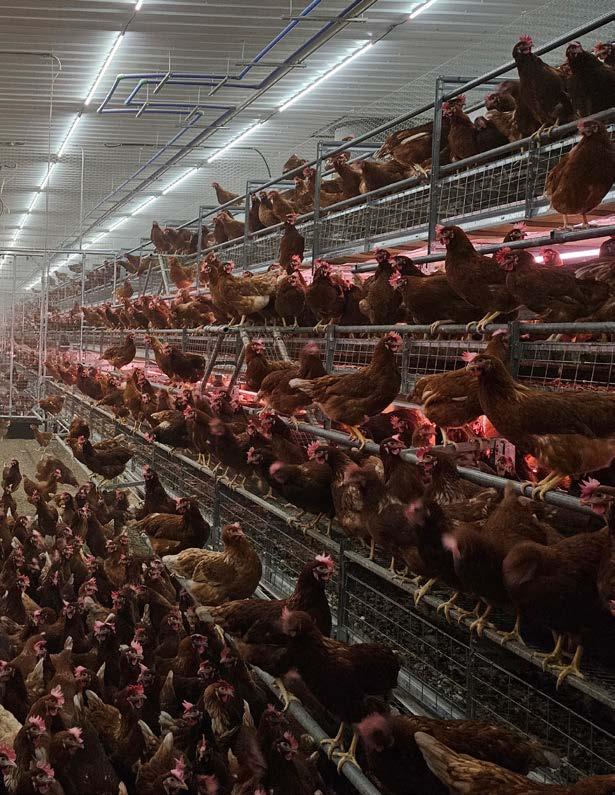


ONE TIME TEACHING
Programming is done with a handheld device that allows custom washing patterns to be designed, for even the most unique barns. Multiple wash patterns can be made per room, or duplicated if rooms are exact replicas. Once the original wash pattern(s) is complete, you simply bring the Evo Cleaner to the start point, and click begin.
NOTIFICATIONS
The Evo Cleaner gives you real time notifications through phone or email. These notifications can tell you when its complete, has a low battery, currently washing, or even stalled due to an obstruction in the alley way. Once the wash routine is complete it will return back to the starting point.
LABOR/COST SAVINGS
While the Evo Cleaner is washing rooms employees can perform other maintenance tasks that otherwise may be pushed off. If washing is hired out this would eliminate employee or wash company costs that can be utilized elsewhere.
SUPPORT
The distributors are thrilled to help with the initial programming and setup in your barn! Readily available to answer any questions and get you familiar with the robot, your local contact is trained in functionality and troubleshooting. All locations stock parts, allowing any issues to be solved in a timely manor, rather than waiting for international shipments, or support.
360 nozzle rotation

3.95-4.76 GPM required water flow makes it compatible with most barns.
2


Fully stainless steel
Accommodates a 165’ long, high pressure hose.
26.77” width but can go as small as 24.01” to fit into tight alley ways.

Contributed Content by Canadian Human Resources Professionals of Manitoba
The key purpose of a job description is to document the current organization of work and to outline the duties of the job. This information is of considerable value to incumbents, supervisors, senior management, human resources (training, recruitment, etc.), job evaluation committee members and others.
Human Resources practitioners have the education, the skills, and the experience to help workplaces, and the people in them, to flourish. Part of this involves ensuring job descriptions are created correctly, reviewed periodically, and do not contain outdated phrases and requirements.
This article will include multiple checklists to ensure your job descriptions are written correctly and in a way that will attract top talent.
The following headings should be considered when creating a job description. Use this checklist as a tool as you create a new job description or modify an existing one.
• Provide a job title that identifies and differentiates this job from other positions.
• Does the title describe both the job and the location or organization the job relates to. Examples would be “Financial Analyst”, “Technical and Administrative Recruiter” and “Corporate Comptroller” (as compared to “Divisional Comptroller”).
• Branch/Department Name and Number
• Identify the organizational unit(s) that will use the job description.
• If the job is present in more than one, list them all or alternatively indicate “several” or “corporate use” as appropriate.
• Reports To
• Name the title of the position that provides supervision to incumbents of the position being described.
• Approved By
• Approval required, name the appropriate division/ department head or delegate.
• Type the name and functional title of the person approving the job and provide room for securing his or her signature.
• Purpose and Scope
• Describe the job’s primary objectives.
• Complete after the work performed section because it summarizes the major duties in a few sentences.
• Duties and Responsibilities or Work Performed
The job description is written to tell:
WHAT is done – using an action verb to begin each sentence (e.g., “Delivers and collects”, followed by an object – e.g., “mail”).
HOW it is done – by adding one or two explanatory phrases (e.g., “… three times daily throughout the corporate office complex ...”).
WHY it is done – what is the objective or purpose? (e.g., “… in order to ensure all communications to/from staff are timely.”)
Writing clearly is the most important consideration. A person outside the specialized field should be able to understand the description. If you must make a choice between being brief and being clear, BE CLEAR. Providing meaningful and correct information is more important than exactly following a proper sentence form.
A job description is written to describe work as currently organized and performed by a FULLY QUALIFIED (fully trained, equipped, and capable) employee. Do not allow anyone’s perceptions of a specific incumbent to unduly influence the contents of a job description.
Job duties should be sequenced in a logical manner considering priorities, chronological order and/or length of time to perform the task. (Most experts recommend the order of “importance” except for repetitive and/or assembly-line type of positions.)
In this day and age, job descriptions cannot be arbitrarily written. They must be clear, complete, and accurate to ensure that they are fair and reasonable. Employers should therefore periodically (at least annually) examine their job descriptions as part of an entire compensation program review. At a minimum, this annual process should:
• Analyze all the positions within the organization to ensure that all employees are properly classified.
• Ensure that job descriptions and hiring specifications
are job related and do not disproportionately screen out legally protected groups (e.g., women and minorities) for example, unnecessary height and weight restrictions.
• Revise job descriptions as necessary to accurately set forth the duties and responsibilities of all positions and specify the requirements for satisfactory performance.
• Ensure that job titles make no reference to gender (e.g., “sales representative” instead of “salesman”) and are accurate in relation to actual job functions and duties.
• Ensure that job evaluation programs measure objective job-related criteria based on articulated job descriptions, and that they evaluate the components of the jobs in question, and not the incumbent employees in those jobs.
• Eliminate concentrations of legally protected groups in particular jobs or sections (e.g., by promotion to positions with greater vertical mobility) in order to avoid claims by minorities or women, for example, that their wages are being intentionally depressed.
• Eliminate situations where protected groups may be under-represented in certain jobs, (e.g., by special recruiting efforts and training programs) in order to avoid claims by these groups that they are being intentionally restricted to lower-level positions and consequently, lower salaries.
• Ensure that all employees have an equal chance to compete for promotional opportunities by implementing job posting programs, for example, as opposed to announcing job openings by word of mouth or handpicking applicants.
Lastly, consider the following checklist of problems that you may have in your job description.
• Use of jargon instead of plain language and facts
• Use of outdated terminology
• Long, detailed descriptions filled with too many irrelevancies
• Short, superficial job descriptions
• References to outdated processes and procedures
• Failure to show the uniqueness of the job
• Use of abbreviations, particularly those that are unique to the department or organization
• Incompleteness
• Attempts to be too precise quantitatively
• Vague or general statements of principal accountabilities
• Use of language that is imprecise, unclear or wordy
• Too many statements of minor duties
• More than one accountability in the statement
• Omission of significant lateral organizational relations
• No use of examples to add meaning
• No recognition of the role the position plays in the overall administrative process
• No statement of greatest challenges or major problems faced by incumbent
• Emphasis on less important aspects of the job
• No reference to timing and frequency of duties and responsibilities
• No statements regarding supervision/management of staff for people leader jobs
When you hire a CPHR, you gain more than a human resources professional; you gain a strategic business partner dedicated to achieving excellence through innovative, inclusive, and integrity-driven practices.
With a CPHR on your team, you have access to a strategic
leader who can provide clear guidance, strategic advice, and leadership in all aspects of HR, including recruitment and on-boarding. By leveraging their expertise, you can unlock the full potential of your business and drive longterm success.
CPHR Manitoba stands as the premier professional association committed to strengthening the human resources profession and maintaining the utmost gold standards of practice. We build and maintain connections among our members, businesses, and the public, offering insight into the HR profession, issues and emerging trends faced at the provincial, national, and global levels.
Learn more at CPHRMB.CA




Farming has always been considered a “way of life” and a “great place to bring up kids”. In that respect, generally, it still is, but any ag business has to be treated primarily as a business venture these days. That business must generate sufficient revenue to cover all the Operating Expenses, the debt payments and provide an adequate living expense for the owner/manager, just like any manufacturing or service industry in town. Most enterprises in any ag sector will currently have a sizable asset value, due mainly to the ever-increasing value of land; buildings; machinery; or, in the supply managed sectors in Canada, quota. As has been the case for many years, farmers are often correctly considered Asset Rich but Cash Poor!
It is very important that the accounting and record keeping in any business is current. Whether the “books” are completed by a family member or an outside source, the owner/manager should be using up-todate information on which to base his/her decision making. Whether it is a pre-paid expense for crop inputs or a small capital investment that is planned; the current financial position will indicate the availability of cash to justify such a decision. The lender may likely ask for the current business position before discussing further loans for a livestock purchase or for a longer-

term capital investment. The bank account does not always tell the whole story, as trade debt could be accumulating unbeknown to the lender. Machinery loans, financed through an equipment dealer may have also been recently arranged. The Balance Sheet should show the full financial position of the business.
What small business in town could afford not to know their financial position at any specified time? Cash accounting is generally quite adequate for most farm businesses, but where cash flow is a problem and trade debt is used as an additional cash source, accrual accounting would be the preference. This form of sourcing extra cash should only be used as a short-term measure, as in time of course, the higher interest rates normally associated with this form of debt become burdensome to the business. So, to maintain a healthy business, it is necessary to optimize the cashflow by maximizing the revenue source(s) on the farm. In dairying, it is so important to optimize the quota allocation by shipping all the milk possible within the system at any one time. By utilizing the quota credit system where allowed, the producer does have some flexibility in matching production to the established calving pattern within the herd.
There are individuals who place all their papers into a shoebox and deliver that on a monthly basis to the accountant’s office. This can work, but it does have limitations, in that it likely means the producer may not be fully in touch with all the detailed information needed to make those current decision. Some businesses only use spreadsheets, which can work perfectly OK and certainly not something to be condemned. Accounting software programs continue to improve as they are developed and updated, which provides the increasing number of producers investing in the technology an opportunity to look at reports that will provide a partial or complete analysis of the business at any given time. In the dairy sector specifically, a regular check on the purchased feed expense and the milk revenue, will give a good indicator of the current trend for operational
profit. There are many other expenses, of course, such as vet, breeding, dairy supplies, as well as hoof care and DHI, but as with other intensive livestock enterprises, the purchased feed cost is by far the highest operational expense. The way that the software program is set up will determine how useful the system is in decision-making. It is especially important that the chart of accounts contains a full list of all the categories of expense, so that the items can be separated properly. For instance, our benchmarking clients are asked to separate some extra categories which can help provide improved advice on micro-managing the operation. Drugs from the vet that are used in breeding programs would be a fitting example. They may be purchased from the vet, but they are a definitely a breeding expense, as is the semen and any breeding supplies etc. There are expenses in all ag sectors that could be separated to allow a more detailed cost analysis. Splitting up machinery/equipment repairs
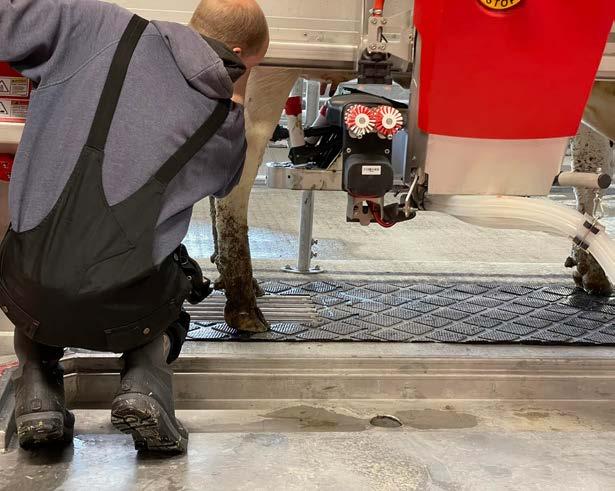
into specific categories could help determine when a piece of equipment needs replacing. As far as the level of expense is concerned, it is worth noting the Operating Expense Ratio [OER]. This is derived from dividing the total operating expenses by the total gross revenue. It is very worthwhile to keep a check on this parameter, which can be affected by both the level of revenue as well as the expense total. Here again is another reason for maximizing the revenue source to optimize the cashflow position. Having dealt with some of the reasons why it is necessary to keep the books updated, I make a point of encouraging those producers who struggle with the accounting side of the business to engage the services of a bookkeeper. If the management team considers their time in the barn or the field to be much more valuable than sitting in the office, then this is strongly recommended. Employing a custom operator to harvest the forage and grain crops is a similar situation. Many producers hire a professional hoof care specialist to look after that side of things. Employing a bookkeeper should be considered in the same light. You are bringing in a professional to complete a task that does not fall within your level of expertise. Where there are a team of owners/managers, farm accounting completed by a professional bookkeeper may even be considered to have more credibility.
Their monthly visit to the farm will ensure that the task is completed efficiently and maintains that current aspect of accounting. On completion of the visit, they will then generate reports that they feel are useful to the producer, or as requested. As a manager, (s)he should go through those reports with the bookkeeper to frequent himself/herself with the information, using this opportunity to evaluate and maybe act upon any upward trend of expense, or even the falling unit value of production revenue. At yearend, the file can be handed over to the accountant for tax preparation purposes. The bookkeeper provides the producer with a detailed report that can reliably be used for management purposes, whereas the accountant prepares a report for tax purposes. There is a significant difference when it comes to using each form of this information to make management decisions. Inventories are at the top of the list for other records that need to be maintained. Keeping a regular
inventory of cattle numbers, forage, purchased feed, supplies and cash crops means the business can produce an up-to-date and meaningful balance sheet at the push of a button. This would likely be required if the producer was seeking further longer-term loans with the lender.
For the last several years many of the ag sectors have seen a reduced operating margin due to rapidly increasing costs, even through the period of cheap borrowing and the associated lower debt payments. In most sectors, revenue has not covered those higher expenses. In the last 2 years interest rate hikes have put a lot of pressure on producers’ businesses, with increased debt payments which have negatively affected the overall profitability of many farms. Looking back 10 years, interest rates were around 8% and yet the industry was able to cope with that rate of borrowing. Operating expenses were so much lower then and most farms’ cashflow were able to manage the principal and interest payments associated with those rates of borrowing. Currently, interest rates haven’t reached those previous levels, but many producers are already experiencing lower profit margins with current debt payments, together with the significantly higher costs. That could certainly become more burdensome when existing loans are up for renewal or new loans are applied for. Producers who are experiencing tighter (perhaps negative) cashflow would be advised to talk to their lender as soon as they see that the business will be entering into a difficult period, especially if there are large seasonal payments due. It is extremely important that lines of communication are always kept open, so that the lender can offer help before the situation deteriorates further. Having a lender that understands your business and shares your vision for your short, medium and long term goals will benefit your business big time!
It has always been essential to operate at the highest level of efficiency in any sector of agriculture. The level of efficiency of your operation is key to keeping expenses to a minimum. In the dairy benchmarking
program that our producer group uses, operating at the most efficient production unit is key. These are the main criteria considered;
• Optimizing quota fill with the highest quality of milk
• Producing the highest amount of milk per cow, whether its measured in Kgs of BF or litres, to optimize the feed that the cow is consuming
• Maintaining a reasonable level of culling
• Maximizing the repro status of the herd; calving interval, days dry, preg rate etc.
• Calving heifers at an early age (but mature animal) to move them from an expense to revenue producing.
• Keeping only the number of heifers required as replacements.
Farming, like any other business, is based on profitability. This message will have been heard before: What you can’t measure, you can’t manage. Having the ability to measure your own production efficiencies with those of other producers, or the average of a group of producers of a comparable unit size, can be a huge step forward to correcting efficiencies in your operation and improving its profitability. The business model suggests that the manager measures several different criteria before making a management decision.
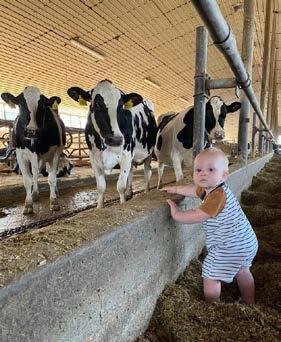

• Maintain up to date accounting
• Make decisions based on the reports from the current accounting position.
• Consider using the services of a professional bookkeeper.
• Dealing with reduced profitability and increased debt payments
• Looking for efficiencies within the operation
Many know the Westman region of Manitoba for the Brandon Wheat Kings, Riding Mountain National Park, or even Neepawa - home of Farmery Brewery. Don't get us wrong - we appreciate all of those immensely, but something that catches our attention and piques our interest a bit more is Topigs Norsvin Innova Canada, home of one of the most technologically advanced barns in Canada.
Located about 12 miles from Gladstone, MB, the newest barn in the Topigs Norsvin lineup boasts a beautifully designed footprint of nearly 100,000 sq ft, making it one of the largest loose housing sow barns in Canada. This facility (equipped by Penner Farm Services, and built by Penfor Construction) is made up of a 13,000 sq ft nursery, 40,000 sq ft of farrowing, 20,000 sq ft of breeding/ training area, and last but certainly not least - a loose housing area measuring 20,000 sq ft. While the footprint is impressive on its own, the features and processes put in place within the barn are even more interesting to dive into.
As with all hog barns, biosecurity is constantly top of mind for the sake of health and genetics. When staff, the Veterinarian, service personnel or other invited industry professionals arrive, the Maximus Solutions Biosecurity controls allow selective entry via key card, or staff using the controls inside the office. Once inside you must place any items to bring into the barn into a UV disinfection chamber for at least 5 minutes, sign in, and leave your shoes on the 'dirty side'. Any equipment entering the barn must go to a fumigation room for a thorough disinfection. Following this, you'll shower in to the barn via their (dare I say) luxurious shower areas. With features such as a double ended locking unit, high pressure shower heads, lockers, epoxy floor and shelving unit with freshly stocked barn clothing, they know one of the keys to their staff's heart is through a good start (and end) to the day.
Once you've donned the Topigs Norsvin branded barn clothes, it's time to enter the barn in your freshly cleaned boots that await over a divider (these do not enter the staff
area under any circumstances). You'll notice a number of key functional design elements to this barn as soon as you enter the hallway. Down by your feet, on either side of the hallway are gutters for easy cleaning, above your head you'll notice a plethora of tubing for the Hydronic Heating system. This system is centrally based to heat the entire site by using hydro electricity, contributing to the goal of a 'green' site. Additionally, the lighting is all LED, consuming less power and emitting consistent lumens.

As you enter the gestation rooms, you notice the expansive size. The breeding and training area measures roughly 20,000 sq ft, as does the loose housing area. These rooms contain EZ Liner on the walls, for easy cleaning and disinfecting. The fans are also noticeably more quiet - this is because of the ECM Blue motors which are all controlled by the Maximus Solutions Controller. These fans not only draw less power due to the ECM Blue motors, but you have finite control allowing for very precise ventilation. Even on the coldest of a good old Manitoba winter day of - 30 or -40 Celsius, the building is comfortable and warm, with no icy drafts or cold spells.
Heading over to the loadout, you'll see perhaps the most prominent biosecurity measures. Upon arrival, the truck drivers use a separate driveway, and once parked, must change their boots and coveralls prior to entering the loadout area, whereas Topigs Norsvin staff shower in to this area. This is a completely separate area from the barn, providing a strict physical barrier to ensure the quarantine process of new pigs (35 days) is followed closely. Once the sows are unloaded, they are guided through a one-way gate into the quarantine room of the barn. Once loadout is completed, staff are required to shower back out of the loadout/quarantine area.

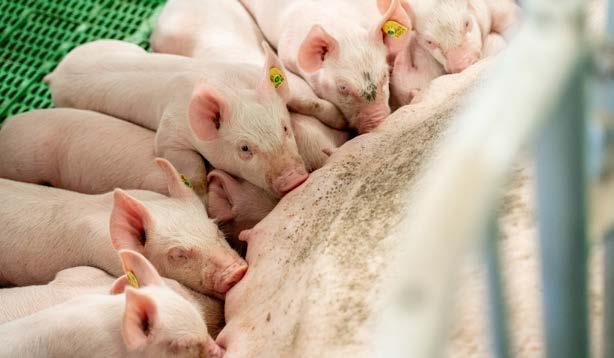
Heading over to the largest area of the barn, the 10 Farrowing Rooms measure 40,000 sq ft in total. But, entry is not permitted if you have visited any other area of the barn. Just like the hospital, the farrowing area features the pigs with the most sensitive immune system. Newborns do not adapt well when introduced to pathogens from older pigs at this stage. This means access to farrowing is limited, only allowing those who have visited the breeding or gestation spaces to enter the farrowing building. If you have previously visited the nurseries, Q barn or site 2, biosecurity measures are in place to protect the sow and her offspring.
The 40,000 sq ft Farrowing Barn boasts 10 rooms, all populated by the 81sq ft Vereijken Free Farrowing pens, each with the Nanny (an enclosed unit installed in the farrowing pen with two piglet-sized entrances and a warming unit. Utilizing the nanny and freedom crate from Vereijken has not only reduced the crush rate of piglets, but significantly increased the comfort for both the sow and piglets.
As previously mentioned, the hydronic heaters (used in
the farrowing rooms) with electric boilers are a significant contributor to the reduction in GHG (Greenhouse Gases) emitted by Topigs Norsvin Innova Canada. These heaters qualified Topigs Norsvin for a number of grants and programs, such as the ACT Program. This hydronic system also provides a healthier environment for the animals, as propane is not needed, emitting no exhaust, humidity or carbon monoxide.
Topigs Norsvin requested that the barn be designed with their people in mind, not just the pigs. This is reflected in the previously mentioned shower facilities, the bright and spacious kitchen area, redesigned slats to be more flushable making cleaning easier, and of course, the stout ventilation system. Even the penning system, with the easy pin removals and reduction in needing to bend over to access parts of stalls was designed with their employees in mind.
The area surrounding the barn did not provide viable or long term water sources – the wells were not an option,

but they did have storage ponds they could use. Once a water source was located within the vicinity, that wouldn’t interfere with local residents (people or animals), a water treatment facility was included in the plans. Water was pumped from 2 miles away to fill the retention pond with enough to last 2 years. The water goes through a series of treatments prior to being delivered to the pigs.
Prior to the Topigs Norsvin Innova Canada build, they had entrusted their builds to Penner Farm Services and Penfor Construction for their Delta Canada Research Site, working with the team at Penner Farm Services (Travis Patenaude, Hog Equipment Sales Rep, and Tim Friesen, Operations Director) and Penfor Construction (Norm Braun, General Manager). Leading up to the start of the Innova site, Tim, Norm, and the Topigs Norsvin group worked closely for a year or so. A deep dive into Vereijken Free Farrowing Equipment was part of this year, along with exploration and designing of the barn with Penfor Construction. Mike Shaw, Director of Genetic Services for Topigs Norsvin, was incredibly thorough in his requests –from pig space, to environmental concerns, to construction budgets, and much more. Although the build faced many challenges with the weather (endless blizzards, and then exorbitant amounts of rain), it went into commission April 2023, and has since had a number of pigs farrow in the barn, very comfortably we might add.





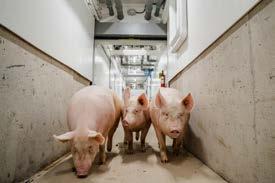

As the buying landscape of agricultural technology is always changing, the collaboration between farmers and industry experts is a key component for farmers and often leads to innovations and increased productivity. Such is the case with the recent project completed by Penner Farm Services with Midwest Colony in Alberta, where ingenuity, collaboration, and dedication came together to transform a vision into reality.

The process began in March 2020 when Midwest Colony began working with the Gary Bosch and the team at Penner Farm Services. Months of meticulous planning, layout adjustments, and idea refinement culminated in the sale of the project in December of the same year. With the groundwork laid, the colony embarked on the ambitious task of building the mill, a process that stretched through the summer and fall of 2021. In January 2022, the project was completed with the final startup and commissioning.
At the core of this project is the grinding and mixing system that produces three tonnes of feed per hour, which meets the current demand while also leaving capacity for future expansion. While the customer had procured a used Leg and Mill skid prior to the project, Penner Farm Services provided the lion's share of equipment and expertise. From

the Easy Automation batching software, Starter Panels and Micro System to the Optimum bins and a myriad of augers, conveyors, and spouting, every component was carefully selected to ensure optimal performance and efficiency.
As with any building project, challenges inevitably arose. However, through collaboration between Midwest Colony and Penner Farm Services , they were able to come up with effective parts and repair solutions. With these solutions and plans in place they firmly laid a strong foundation for years of effective operations.
The benefits of having such a state-of-the-art mill on-site are numerous for the colony. With both Layer and Broiler Barns in operation and plans for expansion, the cost savings achieved by producing feed internally are incredibly beneficial to their bottom line. Additionally, they can produce and maintain a high-level quality of feed, with crops they are growing on their own land. The ability to supply feed for multiple operation with efficiency underscores the strategic advantage of investing in cutting edge technology.
Reflecting on this project, Penner Farm Services continued to build their customer-centric approach and commitment to customization. Each mill project is approached with a collaborative spirit, tailored to meet the unique needs and preferences of the customer. There is no one-size-fits-all solution; rather, a collaborative approach and a true understanding of their customers operation ensures that the final product aligns seamlessly with the customer's vision and operational requirements.
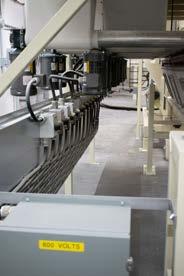

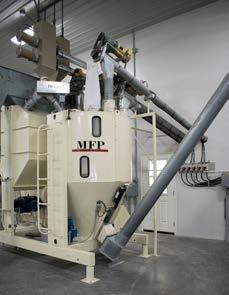
Forget grasshoppers, crickets, or worms, let’s talk about one of the worst pests plaguing your crops. Weeds. Forever popping up, stealing nutrients and moisture, crowding out your crops, and spreading relentlessly - until now.
Redekop Manufacturing, established in 1985 just outside of Saskatoon, SK realized there was a need for innovative technologies used during harvest to reduce labor while improving profitability that was not being met. Through the years they have introduced pivotal pieces to the prairies, such as straw chopper blades and rotors, the KAS pre-cleaner, and more. Over the years their reach expanded to include North America as a whole, working with tractor and equipment dealers to offer their effective solutions across the continent.
In recent years, their focus has shifted heavily to combating weeds in the fields that have become increasingly stubborn and resistant to herbicides, leading them to develop a modified version of the impact mill which renders seeds unable to reproduce once dropped in the soil.
The Seed Control Unit, or SCU, is a compact unit that is installed on the rear of your combine, becoming an integrated part of the residue system. The same mechanical belt drive that the straw chopper runs on, runs the SCU, allowing it to be easily engaged and disengaged.
Once engaged, chaff enters the SCU as it falls off the sieve into the hoppers, where weed seeds are essentially beat up inside two side-by-side impact mills, running in opposite directions. Each mill features a rotor running at a constant 2850 RPM, as well as a stator of u-shaped elements. Once a seed enters the unit, it makes contact with the round vertical pins and stators a minimum of 4-times, before exiting through one of two ejection ports via high velocity air produced by the unit itself.
Science and genomics tell us that once a seed has had four aggressive points of contact ( like being thrown against a stator), it is rendered not viable for reproduction.
This means, attaching a SCU to the back of your combine, will render 98% of the seeds that pass through it as useless, leading to a significant reduction in weeds in your fields. While the SCU is not a replacement for a weed suppression program, it can be likened to a chainsaw in a handsaw fight.
The impact mill is certainly nothing new to the farming world, but it is in this use case. The Redekop MFG engineering team designed its’ own iteration of the mill, allowing the SCU to retrofit on to all major OEM combine brands, covering the majority of Class 8 & 9 models, as well as some legacy models.
There are some minimum Horsepower requirements to ensure harvest is not disrupted, of course. The unit when empty will require between 32 - 35 hp, whereas when running it will require upwards of 70hp.
The Aussies Love it
In previous decades, Australia has seen rapid growth of resistant weeds, particularly annual rye grass, which is resistant to all chemicals. After use of the SCU on Australian combines, the benefits in weed reduction spoke for themselves. As of 2023, you will find that over 50% of all combines ‘down under’ feature a SCU.
Haven’t seen a SCU in store? Not to fret! Simply contact your tractor color-of-choice dealer and request they order and install a Redekop Mfg SCU for you. Installation is fairly simple and quick, typically taking between 1 - 2 days. The capital and operating costs of the SCU runs approximately $3.75 USD/acre, dependent on crop, weed pressure and other input costs.
Keep an eye out for the next iteration of the SCU, able to accommodate lower HP combine!
Visit https://www.redekopmfg.com for more details, and to learn more about weed seed control for your farm and fields.

SCU: Your dream come true, a weeds worst nightmare.
By Ashley Graye



& Alice Nieuwland - Ponoka, AB
Established: 1995
Sector: Dairy
Number of Employees: Two: Otto & Alice (plus the kids when aavailable!)
Breed of Dairy Cows: Holsteins
Method of Milking: One Lely Astronaut A4
Acres Farmed: 500

Did You Know? Terra Nova Farms is home of the Lely Astronaut A4 Milking Robot with the most amount of milkings in North America! As of December 2023, their A4 had recorded 823,706 milkings since Penner Farm Services installed it in 2012. Learn more about Terra Nova Farms by scanning the QR code here.

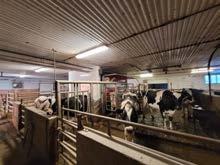


 By Sean McCormick
By Sean McCormick
2 cups chopped celery
2 small jalapenos, chopped
3 cups chopped red onion
3 cloves crushed garlic
1 can of beer (pick your favorite!)
1 can of corn kernels
2lbs ground beef
15oz can of Tomato or Chili Sauce
45oz canned diced tomatoes
2 cups of beef stock
2 cans of pinto beans
1/4 to 1/2 cup chili powder
2 tsp paprika
1 tsp cayenne
1. Turn smoker on to 275F
salt to taste 1 tbsp cumin
2 tsp oregano
1/2 tsp onion powder
2. Mix all ingredients (except ground beef) in a dutch oven, place on middle rack of smoker
3. Form ground beef into a giant meatball or log
4. Place meatball/log on rack directly above your dutch oven
5. Smoke until meat reaches internal temperature of 165
6. Remove meat, and cut/chop up and add into the other ingredients in the dutch oven
7. Return to smoker for another 45 minutes
Serve with grated cheese, sour cream, and a bread of your choice!



I remember back in 1980 something when my dad came home with a Honda Big Red three-wheeler. It was a pretty exciting day for my brother and I, and it made for a pretty fun up and coming summer! I don’t remember any discussion of how to operate it other than “This is the throttle, this is the brake, and this is the clutch……don’t hurt yourself” I definitely don’t remember any discussion on how to use it safely and no memory of ever wearing a helmet. A lot of things have changed since then, not all for the better, but safety is one area we have improved on. ATVs can provide exciting adventures for kids, but safety should always be the top priority. Here are some tips to ensure a safer riding experience for youth:
Farm-Specific Training: Provide children with farm-specific ATV safety training that covers the unique hazards and challenges they may encounter on the farm, such as uneven terrain, livestock, machinery, and farm equipment.
Appropriate ATV Size and Engine: Ensure that the ATV’s engine size is suitable for the child’s age and physical capabilities. Follow industry recommendations for youth-sized vehicles based on age and engine displacement.
Safety Equipment: Ensure that children wear appropriate safety gear, including helmets, goggles, gloves, long sleeves, long pants, and over-the-ankle boots.
Safe Speeds: Encourage children to ride at safe speeds appropriate for the terrain and conditions on the farm. Discourage behavior such as speeding, sharp turns, and jumps.
Awareness of Surroundings: Teach children to be aware of their surroundings at all times and watch out for potential hazards such as livestock, farm equipment, fences, ditches, and other obstacles. Maintenance and Inspections: Regularly inspect and maintain ATVs to ensure they are in proper working condition. Check brakes, tires, lights, and other components before each use, and address any issues promptly.
Establish Safe Routes: Identify and establish safe routes for ATV travel on the farm, avoiding areas with steep slopes, deep mud, or other hazards whenever possible.
Emergency Preparedness: Make sure children know what to do in case of an emergency and seek help if needed. Keep emergency contact information readily available.
Remember, ATVs can weigh up to 600 pounds, making them challenging to control even for adults. By following these safety guidelines, you can help reduce the risk of ATV-related injuries and create a safer environment for kids on the farm.
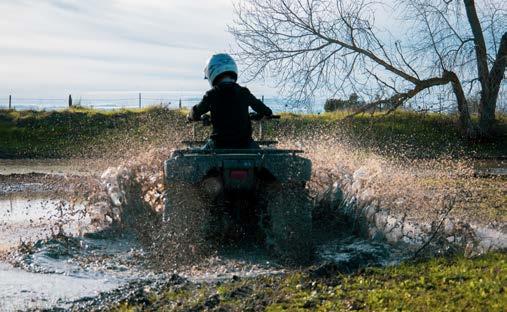



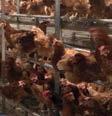
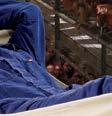
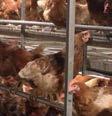
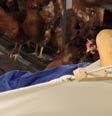









The importance of ensuring quality drinking water in your farms cannot be underestimated. An accurate water treatment program ensures the cleanliness and safety of the water consumed by the pigs. This approach not only guarantees their health but also optimal growth, positively impacting your yields. Here are a few points to consider for optimal drinking water conditions.

Wet/Dry feeders, drinking troughs, nipple drinkers
• Ensure clean pig drinkers and feed troughs
• Make sure nipples, wetting pushers, or suckers are not blocked
• Periodically measure the water pressure and flow rate of your installations
• Check the seals and replace them if necessary a few times a year. It's easy and inexpensive
• Once a year, check if your pipes are clogged: lime, tartar, and residues can significantly reduce water flow
• It is also advisable to filter water to prevent pipes and nipples from clogging with dirt. This will definitely save you from problems
• Depending on the type of drinker chosen, make sure to respect the recommended installation height by the manufacturer and have the correct water pressure


• The first visit to the drinker occurs within the first 18 hours of the piglet's life
• More than 80 visits to the nipple drinker per day during weaning (stress)
• Post-weaning, 100% of piglets visit the drinker at least once between 9 a.m. and 1 p.m. (important for treatments)
• During fattening, a pig drinks 30 times a day and spends 10 to 15 minutes/day at the drinker
• Consumption is mainly diurnal with consumption peaks in mid-morning and late afternoon
• More than 75% of drinking sessions are associated with meal times

Drinking water for pigs should be of the same quality as your own drinking water. In other words, you should be able to drink the same water as the pigs. Water quality needs to be assessed at the artesian well and valves, drinkers, nipples and suckers because impurities and bio-film can accumulate in the pipes. If analyses reveal contamination in the system, the pipes should be cleaned and disinfected if necessary. Regular cleaning of the system therefore helps ensure good water quality.
There are no miraculous treatments, only strategies, and they are based on:
• Knowledge of your facilities
• Implementing an appropriate maintenance plan
• Conducting chemical and microbiological analyses of water supply and drinking water
• Using authorized substances for water treatment
For cleaning:
• Foaming gun or foaming hose attachment For treating:
• Proportioner / Medicator
• Dosing Pump
• Pre-assemble panel such as Stenner’s
• pH indicator strips (litmus paper)
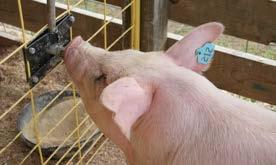
Chemicals:
• Alkaline cleaners
• Acid cleaners
• Sanitizers and disinfectants
• Acidic additives
Before initialing a water treatment procedure, it is crucial to ensure that the properties and equipment are totally clean and disinfected. Treating water going through clogged or dirty lines, feeders or troughs is useless.
A year long cleaning and disinfecting program will contribute to your animals’ health as well as allowing a shock treatment at any time if needed. We can help you with water treatment chemicals, water pH control, bio film removal, chemical feed pump sales and calibration and a complete bio-security protocol.


HIFOAM is a heavy-duty, very high foaming alkaline cleaner used to for cleaning of stables, animal housing, buildings and equipment. With a prolonged contact time of up to 30 minutes, HIFOAM is very effective on heavy soil and helps saving labor time and water.
• Phosphate free
• Abundant, lasting and thickening foam
• EDTA free
• High alkalinity
• Completely water
FOAM-EZE is an alkaline, high foaming cleaner for accessible surfaces in agricultural and horticultural industries. FOAM-EZE is a high performance product designed for very stubborn deposits such as debris dried over surfaces, organic deposits and other soils difficult to dislodge.
• High foaming
• Moderate alkalinity
• Non-chlorinated
• Low corrosion on soft metals such as aluminum, galvanized metals, or bronze
GLUQUAT 300 is a non-corrosive, glutaraldehyde/ quaternary ammonium-based disinfectant used for disinfection of agricultural and horticultural buildings such as hog barns and poultry housing facilities, hatcheries and livestock trucks and trailers.
• Non-corrosive
• Contains 12.5% glutaraldehyde
• Contains 6,7% 5th generation quartenary ammonium compounds
• Effective in warm, cold and hard water
• Wide virucidal and microbiocidal spectrum

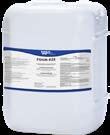



HYPER O is a peracetic acid solution for sanitizing surfaces and equipment in farm buildings and water treatment.
HYPER O removes scale and mineral and organic build up.
• Non-foaming acidic liquid
• Strong oxidizer
• Low viscosity
• Biodegradable
• Highly efficient
• No cell resistance build-up
• Control of a broad spectrum of microorganisms
QUADRACID is an acidifier for water pH control. It contains one inorganic acid and three organic acids. It is specially formulated to provide the appropriate pH for optimal water quality in a safe and quick manner. When used as indicated, the pH will be lowered by 1 to 3 unit, depending on water quality and hardness.
• Four acid composition: phosphoric, citric, lactic and formic
• High performance product
• Non-foaming
• Highly concentrated
• Optimizes water quality
PREMISE DISINFECTANT is used for cleaning, disinfecting and sanitizing agricultural and horticultural buildings such as animal housing, livestock trucks, equipment, and as a shoe bath prior to entering barns. Also used as a deodorant and drinking water sanitizer.
• Contains 1.75% of titratable iodine
• Effective in cold water
• Effective against Porcine Reproductive and Respiratory syndrome (PRRS),
• Effective in the presence of organic matter
• Maintains effectiveness in hard water
Our dedicated representatives are here to provide you with personalized advice tailored to your specific needs. They can assist you in implementing effective and cost-efficient cleaning and disinfecting program and water treatment solutions, thereby contributing to the overall efficiency of your operation.
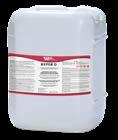



By choosing West Penetone, you are opting for quality, reliability, and professional support. Together, let's ensure the health of your animals and the sustainability of your operation. We are here to support you every step of the way.

Computers perform best in clean, dry, cool and well-ventilated environments. Unfortunately, that’s not always possible with the space available to us. Nonetheless, regular maintenance is an absolute must to keep top performance and reliability, and increase the longevity of all hardware components. Follow these guidelines to make sure your computer can serve you all its performance and last as long as it can.
1. Place your computer in a clean, dry, cool and well-ventilated spot if possible
Moisture is never good for electronics, and good airflow is key to cooling your computer.
2. Install case air filters
Case air filters act as a protective barrier from dust and dirt so your computer can breathe in clean air
3. Regularly clean hardware components
With a small, soft paint brush, clean the case, filters and computer components. You may also carefully and gently, blow out the case with a can of compressed air.
Warning: Violently blowing compressed air on components may damage them.
4. Use a UPS to protect against power surges
Power surges can damage your components and therefore decrease the performance and lifespan of your computer. Use an Uninterrupted Power Supply (UPS) with built-in surge protection to keep clean power flowing in and prevent damage.
5. Regularly reboot the computer
Leaving the computer on 24/7/365 without ever rebooting will result in slow performance and cause errors. Reboot the system once a week to reset the operating system and keep your system responsive, efficient, and healthy.

6. Handle with care
Always handle your computer with care. Avoid dropping or bumping to prevent malfunction or damage to components
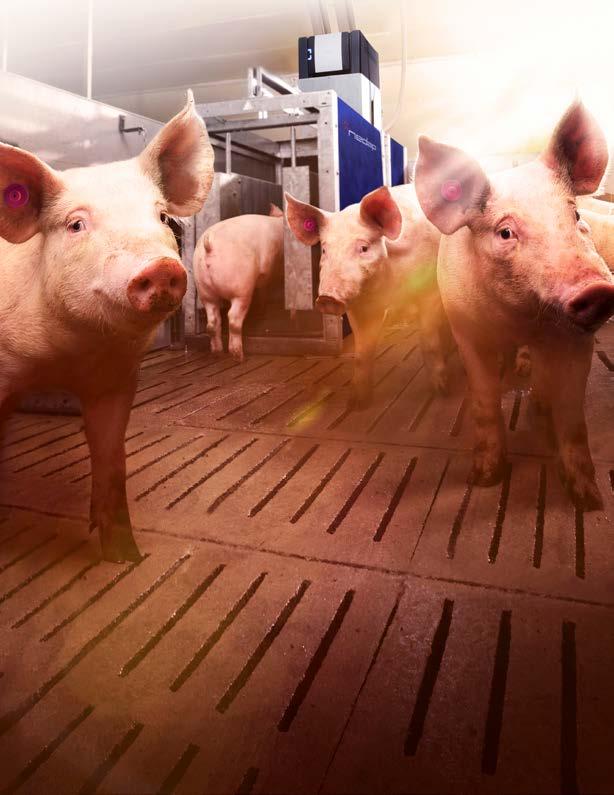

Students! How well do you know all the baby farm animals found in Manitoba? Fill out the crossword and flip the page to find out how you did!
Thank you Agrihub and Penner Farm Services for supporting agriculture education in Manitoba!
Food connects us all, and feeding our province and the world is one of Manitoba’s superpowers. But few Manitoba students know where their food comes from or have any connection to the amazing people who produce it.
At Agriculture in the Classroom-Manitoba (AITC-M), we grow understanding by delivering free, high quality classroom resources, activities and programs that educators can use to link agriculture to Manitoba curriculum in all subjects and at all grade levels.
With help from partners like Agrihub and Penner Farm Services, we’re closing the gap between farm and plate and inspiring the future of our industry.
Last year, more than 37,500 students registered in our programs, including Follow the Farmers, a series of virtual farm tours generously supported by Penner Farm Services.
With help from Penner, over 13,500 Manitoba students have experienced tours of Manitoba farms and talked to real Manitoba farmers since the series launched in 2021– without having to leave the classroom!
For each farm tour, we also created curriculum-connected activities for teachers to bring the tour to life and highlight the importance of agriculture in our everyday lives. Views of our video tours are on the rise, some with hundreds of thousands of views from around the world!
All our resources and programs are free to educators and students. But they’re not free to produce, and demand continues to rise. Support from Manitoba’s agriculture community is vital to expanding our programs so that we can reach more classrooms.
If you’re already a donor to AITC-M, thank you for supporting agriculture education! If you haven’t donated yet, think about this: every student experience in 2023 cost AITC-M just $3. For just $75, you can sponsor a whole classroom and invest in the future of agriculture!

World Pork Expo
New Standard Ag Open House
Alberta Pork Congress
Western Canadian Poultry Conference
Ag in Motion
Alberta Livestock Expo
SK Pork Symposium
Agri Trade
Dairy Farmers of Manitoba AGM
Prairie Livestock Expo
June 5 - 7, 2024
June 11, 2024
June 12 - 13, 2024
June 13, 2024
July 16 - 18, 2024
October
Nov 4 - 5, 2024
Nov 13 - 15, 2024
December
Dec 11, 2024
Iowa State Fairgrounds Des Moines, IA
New Standard Ag Wpg Winnipeg, MB
Westerner Park Red Deer, AB
Westerner Park Red Deer, AB
Discovery Farm Langham Saskatoon, SK
Agri-food Trade Centre Lethbridge, AB
Saskatoon Inn
Saskatoon, SK
Westerner Park Red Deer, AB
Victoria Inn Winnipeg, MB
Victoria Inn Winnipeg, MB


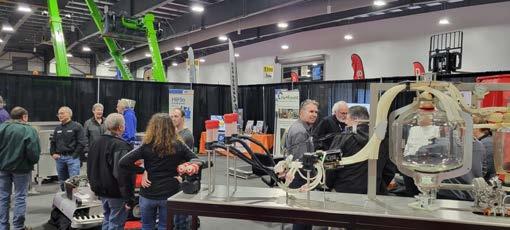
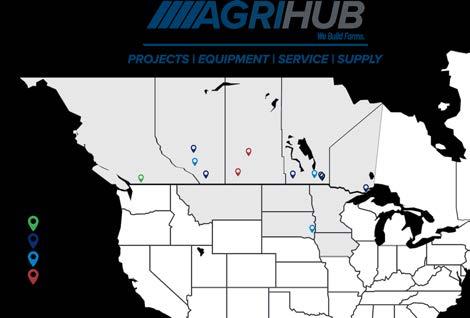
Penner Farm Services is a leading provider of livestock equipment, supplies, and services. Since 1956, livestock producers have relied on Penner Farm Services to provide their entire scope of automated equipment for efficient farm management. Locations: Blumenort, MB, Lacombe, AB, Lethbridge, AB, Thunder Bay, ON
Western Ag Systems established in 2005, has a strong following with the Hutterite Brethren community within the prairies. While their focus has largely been Hog, Grain and Poultry, since joining AgriHub they have expanded to serve the Dairy industry as well with Lely Automated solutions. Locations: Swift Current, SK Saskatoon, SK
Head Office: Winnipeg MB
United Agri Systems is a prominent name in the Poultry industry, setting standards for Poultry houses, controls, ventilation and more. Established in 1998, they are a well respected and pivotal partner in poultry, grain and dairy. Locations: Abbotsford, BC
Locations: British Columbia, Alberta, Saskatchewan, Manitoba, Ontario
AgriHub is a leading edge group of companies supplying the Agriculture industry with Projects, Advisorry Services, Equipment and Consumables across Western Canada.
New Standard Ag was founded in 2006 in Manitoba, Canada, setting the industry standard for group housing within the Hog sector. Since then, they have expanded into poultry, becoming the trusted providers to Hutterite Colonies in both Canada and the United States. Locations: Winnipeg, MB, Sioux Falls, SD, Brandon, MB
Dundas Agri Systems Is an established, family owned, and operated company launched in 1981 to serve Dairy Producers of Eastern Ontario. As a prominent provider of Lely and Boumatic systems, and well-regarded expert in milking, DAS currently is privileged to serve over 250 dairy farms in the Eastern Ontario region. Locations: Brinston, ON
Penner Farm Services is a leading provider of livestock equipment, supplies, and services. Since 1956, Livestock producers have relied on Penner Farm Services to provide their entire scope of automated equipment for efficient farm management.
Locations: Blumenort, Brandon, Lacombe, Lethbridge, Thunder Bay
Western Ag Systems established in 2005, has a strong following with the Hutterite Bretherin community within the prairies. While their focus has largely been Hog, Grain and Poultry, since joining AgriHub they have expanded to serve the Dairy industry as well with Lely Automated solutions.
Penfor Construction provides General Contracting services specializing in Agricultural and Commercial buildings. Since 1995, Penfor Construction has designed, built and renovated Hog Barns, Dairy Barns, Poultry Barns, Horse Facilities, and Commercial projects.
Locations: Swift Current, Saskatoon
United Agri Systems is a prominent name in the Poultry industry, setting standards for Poultry houses, controls, ventilation and more. Established in 1998, they are a well respected and pivotal partner in poultry, grain and dairy.
Palmlite Industrial Services, established in 2012, offers a wide selection of generators, transfer switches, pumps and electric motors for industrial, commercial, and agricultural applications as well as residential solutions for home and cottage owners. Locations: Blumenort, MB
Locations: Abbotsford
New Standard Ag was founded in 2006 in Manitoba, Canada, setting the industry standard for group housing within the Hog sector. Since then, they have expanded into poultry, becoming the trusted providers to Hutterite Colonies in both Canada and the United States.
Horizon Livestock & Poultry Supply Since 1996, Horizon Livestock & Poultry Supply has provided quality products and services to the local agricultural industry. Our experienced and knowledgeable staff partner with you to select the best product lines to maximize animal care, operating efficiency, and return on investment.
Locations: Steinbach, MB
Locations: Abbotsford
Palmlite Industrial Services, established in 2012, offers a wide selection of generators, transfer switches, pumps and electric motors for industrial, commercial, and agricultural applications as well as residential solutions for home and cottage owners.
Locations: Blumenort
Cortex Agritechnology is a data driven, farmer first, technology solutions provider for producers of any size. Whether producers are looking for software to assist in feed planning, or the ability to connect their legacy equipment for insights into their data, Cortex can help.
Horizon Livestock & Poultry Supply Since 1996, Horizon Livestock & Poultry Supply has provided quality products and services to the local agricultural industry. Our experienced and knowledgeable staff partner with you to select the best product lines to maximize animal care, operating efficiency, and return on investment.
Locations: Steinbach
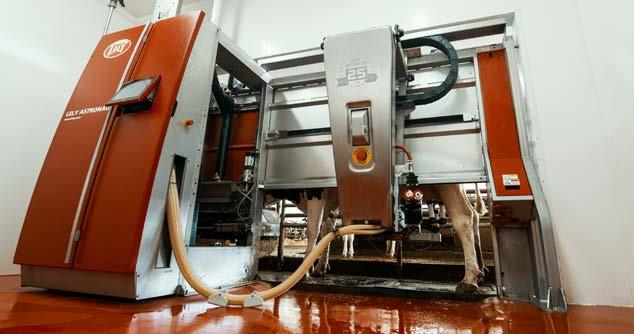
From concept through production, our experienced team of agriculture experts are there for you. We have built a legacy of knowledge and reputation by helping producers run an efficient operation, first by understanding your business and providing you with state-of-the-art system design, durable equipment, reliable service, and supply.


